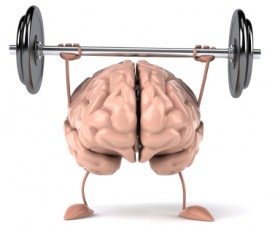
Isaac Asimov said, “The human brain…is the most complicated organization of matter that we know.” [i] And it’s true. Our amazing brains are both a product of biological evolution and a reflection of the world around us.
First, the stuff of the brain – grey matter, white matter, fluids, blood vessels – is made up of nutrients from the plants and animals we consume from the world around us.
Second, in terms of brain function, our interaction with our environment has a major impact on both brain structure and brain health. Extensive and ongoing research into “ brain plasticity” has proven that everything we experience, everything we see or touch or hear, creates a perception that changes the wiring of the brain itself.
Given that our brains are a product of evolution (which is outside of our control) and environment (which is only partially under our control, and often less than ideal), how can we keep our brains as healthy as possible, from birth all the way through old age?
The pathway to optimal brain health comes from the small choices we make every day. By making healthy choices on a regular basis, and particularly by turning those choices into habits, we can help our brains stay healthy while also helping the young people in our lives learn positive self-care skills that can last a lifetime.
Here are three important steps everyone can take toward optimal brain health:
- Eating more healthy foods and minimizing unhealthy foods.Eating foods that provide nutrients to build healthy brain tissues is essential. Foods high in omega-3 fatty acids, such as salmon, avocados and nuts, along with foods high in potassium like bananas promote brain function. Also, lowering our intake of sodium can reduce blood pressure, a factor that can, if left unchecked, lead to stroke.
- Engaging in regular physical exercise.Like every other organ and tissue in the body, the brain needs healthy blood flow to function at its highest possible levels. Physical exercise helps improve and maintain cardio vascular health, allowing the body to efficiently and effectively deliver oxygen and nutrients to the brain. But it can do more for us. In students, educators have reported physical exercise resulting in less disruptive behavior, higher self esteem, less anxiety and greater attentiveness. Dr. John Ratey of Harvard University describes exercise as “food for the brain.”
- Giving your brain practice in the activities you want it to be good at.The neural pathways that our brains create over time, as we have said, are a direct result of the stimuli that we receive. That’s why through practice and training, a child can work to shape their brain into that of a great musician or mathematician or martial artist. At the same time, we must remember that negative input also affects our wiring. For example, excessive amounts of watching television and playing video games has been shown to have concerning chemical and biological effects, such as the suppression of melatonin release, elevated blood cholesterol and an increased chance of coronary heart disease – and these effects should be taken into consideration as we make decisions about how we spend our time.
The brain might be the most complicated organization of matter we know of, but that doesn’t make it difficult to keep healthy. By learning to choose the right foods, the right activities, and the right input, we can each take control – at any age – of building the brains we want.
Children can begin learning to make good choices from the earliest ages, but it is up to parents and teachers to model these healthy habits of mind.
Yes, that means you.
References:
[i]J. Hooper and D. Teresi. The Three-Pound Universe. Macmillan Publishing Company. 1 stedition 1986.
Related Reading:

